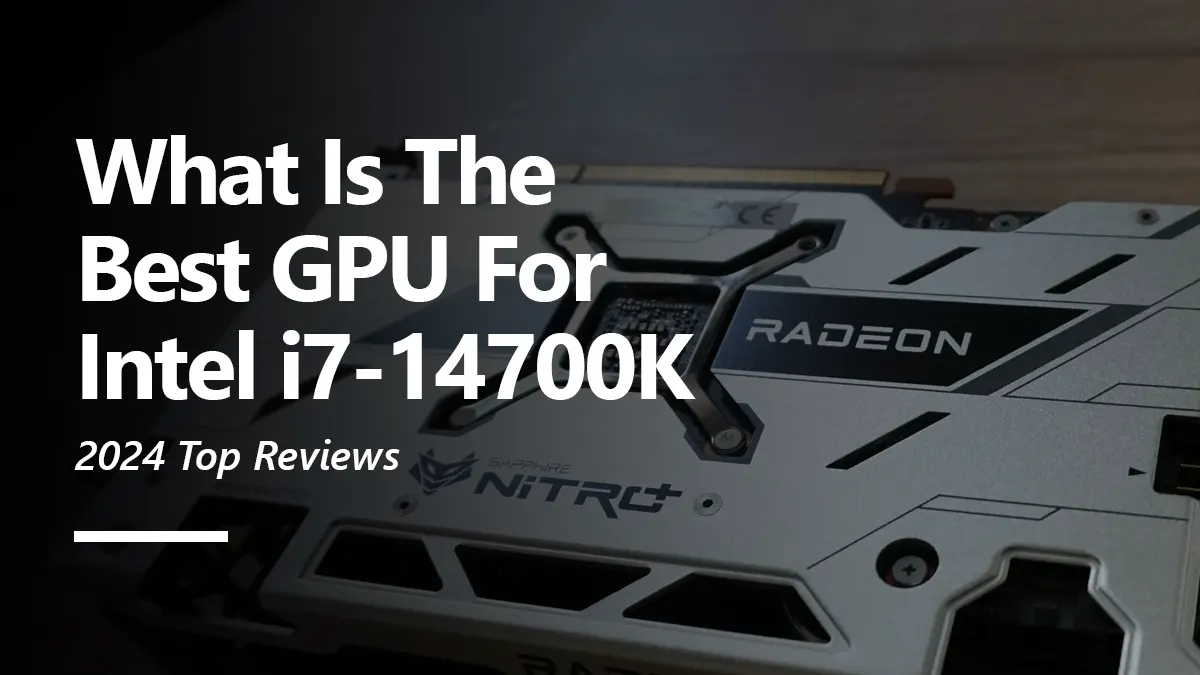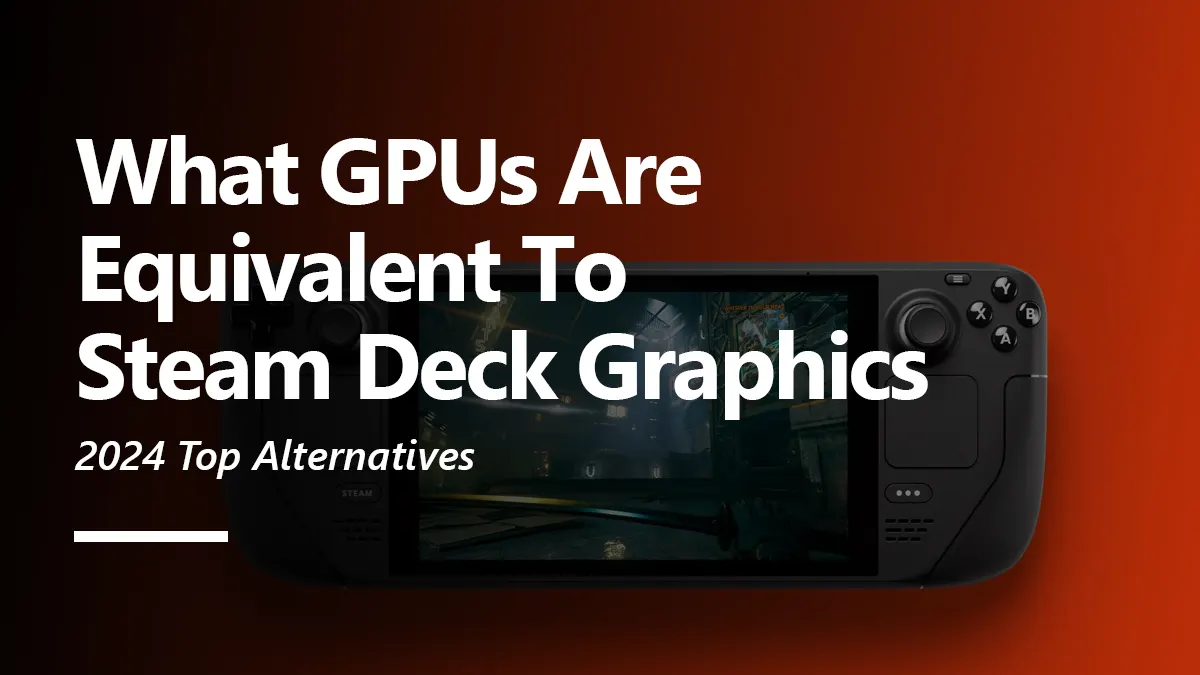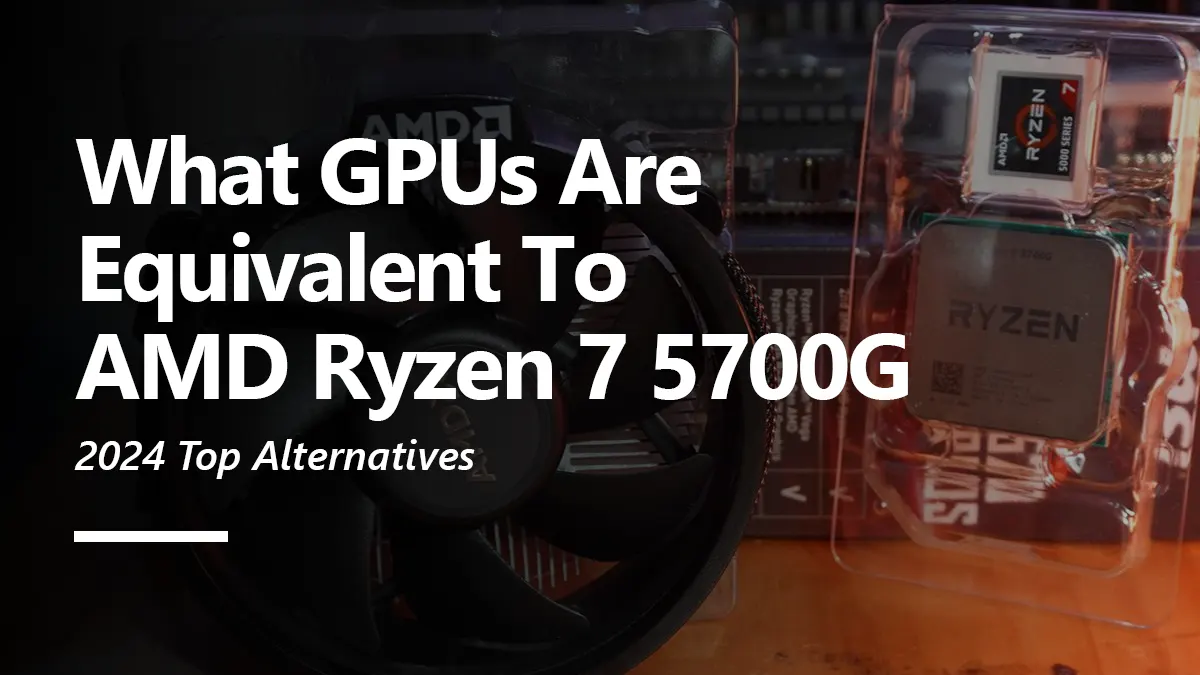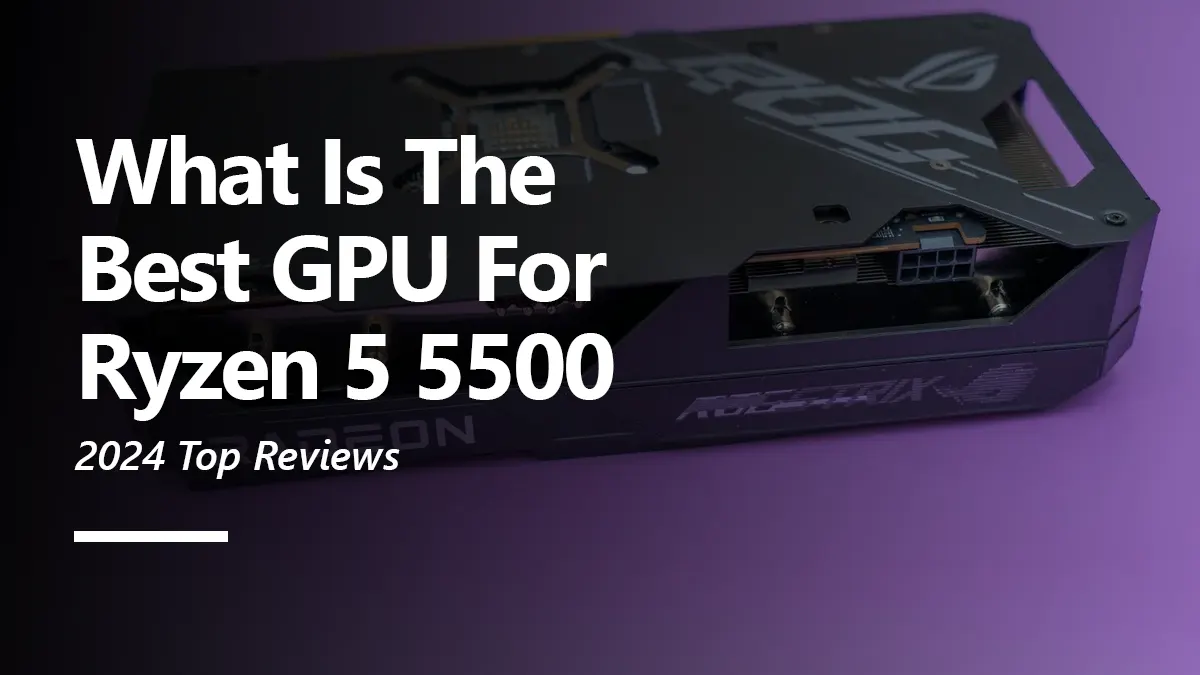The processor market has been widely dominated by AMD’s gaming and creative tasking-centered processors for the past few years. Intel has been putting up with the competition gracefully, but its 14nm and 10nm processes, compared to AMD’s widely available 7nm process, don’t provide enough value for money. We’ve picked the best graphics card for i7 14700K that you can use in your build.
Meanwhile, the performance margin of the AMDs Ryzen line of processors has steadily increased, and their exceptional driver support, along with the higher compatibility with their GPUs, has captured the attention of many people. Hence, it resulted in AMDs’ recent growth and popularity. For this reason, many gamers/content creators started gravitating toward an all-AMD PC build for an ultimate gaming experience.
Intel is about to release its 14th-generation line of processors later this year. It is believed to be released in the 3rd or 4th quarter of 2023. It is speculated to have a more significant performance margin. The hype for the release of Intel’s 14th Gen processors is unreal since they might have the edge over AMDs latest processors.
Intel’s 14th generation processors are aptly named the “Meteor Lake,” following their trend of naming conventions such as the “Raptor Lake (13th Gen)”, “Alder Lake (12th Gen)”, and so on. Intel is finally moving from its 10nm process to the 7nm on the Meteor Lake, which will significantly improve performance. They have also improved the P and E cores designed to simultaneously divide and balance heavy-duty tasking and background tasks for better efficiency. The new “Crestmont” E-cores will be 15% more efficient than the previous “Gracemont” cores. Similarly, the New “Redwood Cove” P-cores will be 25% more efficient than the previous “Raptor Cove” cores.
Intel has increased the overall number of cores in their upcoming processors, specifically the E-cores to improve multi-core performance. Intel is majorly focusing on the gaming performance of its upcoming processors. The i7 processor is supposed to come with twelve E-Cores and eight P-cores, while the i9 processor is going to have eight P-cores and sixteen E-cores.
With the processor’s detail out of the way, we are here to give you an insight into what GPUs will be the best match for the upcoming Intel i7 14700K. We have compiled a list of already-in-market graphics cards that will pair nicely with the upcoming processor without being problematic and deliver the best possible gaming experience. These GPUs benchmarks will be compared based on the previous, similar performance processors to provide an idea of what performance to expect from the upcoming Intel i7 14700K.
GPU Recommendations for i7 14700K Summary
| Image | Model | Price |
|---|---|---|
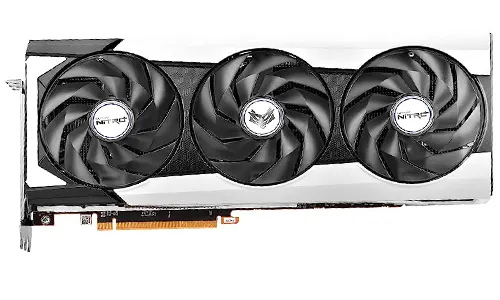
|
SAPPHIRE NITRO+ AMD Radeon 6950 XT PURE 16G | See on Amazon |
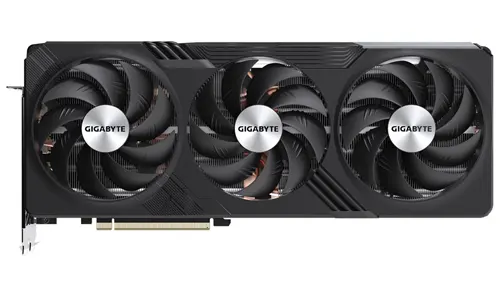
|
GIGABYTE Radeon RX 7900 XT GAMING OC 20G | See on Amazon |
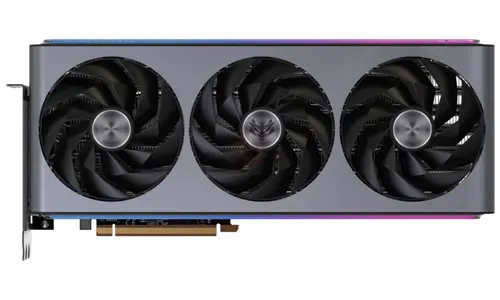
|
SAPPHIRE NITRO+ AMD Radeon RX 7900 XTX VAPOR-X 24GB | See on Amazon |
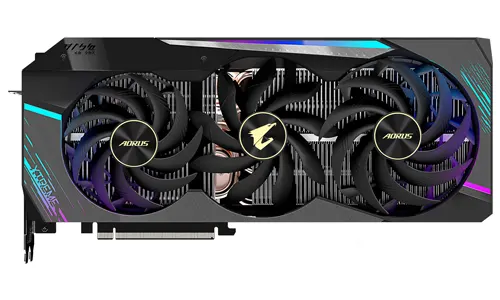
|
AORUS GeForce RTX 3090 GAMING 24G | See on Amazon |
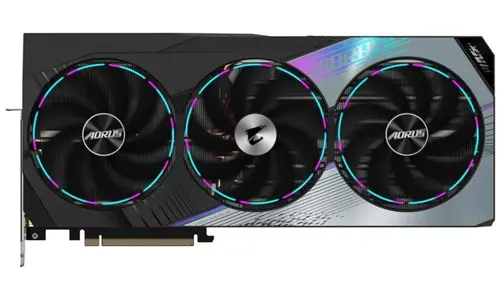
|
AORUS GeForce RTX 4080 16GB MASTER | See on Amazon |
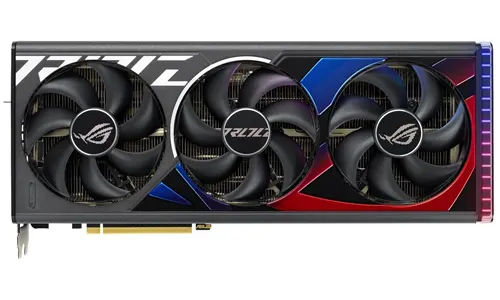
|
ASUS ROG STRIX GeForce RTX 4090 OC EDITION | See on Amazon |
GPU Recommendations for i7 14700K At a Glance:
- SAPPHIRE NITRO+ AMD Radeon 6950 XT PURE 16G
- GIGABYTE Radeon RX 7900 XT GAMING OC 20G
- SAPPHIRE NITRO+ AMD Radeon RX 7900 XTX VAPOR-X 24GB
- AORUS GeForce RTX 3090 GAMING 24G
- AORUS GeForce RTX 4080 16GB MASTER
- ASUS ROG STRIX GeForce RTX 4090 OC EDITION
GPU Recommendations for i7 14700K Reviews
SAPPHIRE NITRO+ AMD Radeon 6950 XT PURE 16G
REASONS TO BUY
✓ Better looks than even the RX 7000-series GPUs
✓ Best-value GPU for i7 14700K for casual 4K gaming
✓ Good VRAM capacity for the price
REASONS TO AVOID
✗ RT performance doesn’t seem practical
✗ Little boost over the cheaper RX 6900 XT
SAPPHIRE is the leading graphics card manufacturer of the company and its variants are well-known for excellent thermals and high reliability. SAPPHIRE’s implementation of the cooling solutions in its NITRO+ variants has been praised by many enthusiasts and no doubt, you cannot buy a better variant for RX 6950 XT than the NITRO+ PURE variant.
SAPPHIRE NITRO+ Radeon 6950 XT PURE is a super-rare graphics card that is not usually available at most stores. The design of the graphics card makes it the most beautiful Radeon graphics card of all time, presenting a white color theme with RGB lighting at the fan shroud and the top of the card. The fans used in the graphics card are the same as those used in the RX 7000-series graphics cards and no doubt, these fans look objectively better and provide a futuristic look compared to fans by other companies.
It is the flagship graphics card by the company from the previous generation, which is why its price is quite a lot lower than what it used to cost two years ago. The raw performance of the graphics card is similar to RTX 4070 Ti, although it does not support any similar technology to Frame Generation, so the 4070 Ti outperforms it by a long shot in titles where Frame Generation is available. Moreover, the RT performance of the graphics card is also inferior to the latest-generation graphics cards, so it should not be used for Ray Tracing except in very old titles like Shadow of the Tomb Raider.
The graphics card supports 5120 stream processors along with 320 TMUs and 128 Render Output Units. Moreover, it supports 80 RT cores, which is why you can play games like Shadow of the Tomb Raider at 4K Ultra with Ray Tracing or newer titles with reduced resolution or settings. The memory of the graphics card is ever so slightly better than the RX 6800/XT or 6900 XT, providing 576 GB/s of memory bandwidth with a VRAM buffer of 16 GB, compared to the 512 GB/s of bandwidth you get with the above-mentioned cards.
Overall, if you are not much into Ray Tracing and don’t want to spend money on stuff like RTX 4080 or RX 7900 XT, SAPPHIRE NITRO+ Radeon 6950 XT PURE seems like a perfect option.
GIGABYTE Radeon RX 7900 XT GAMING OC 20G
REASONS TO BUY
✓ Based on the latest architecture RDNA 3.0
✓ Comes with higher VRAM capacity than NVIDIA counterparts
✓ Raw performance surpasses RTX 4070 Ti
REASONS TO AVOID
✗ RT performance in most games is not comparable to NVIDIA’s GPUs
✗ Gamble with the upcoming FSR 3.0 technology
The next graphics card that we have on the list is the GIGABYTE Radeon RX 7900 XT GAMING OC 20G, which is the second-best graphics card by AMD that follows the RX 7900 XTX. With RDNA 3.0, the major improvements are increased clock rates, increased stream processors, and higher memory bandwidth and VRAM capacity. GIGABYTE Radeon RX 7900 XT GAMING OC is a mid-range variant of the RX 7900 XT and it is usually available at a lower price than high-end variants like the SAPPHIRE NITRO+ or MSI GAMING X, etc. The performance of the graphics card is better than RTX 4070 Ti in most titles by around 20 percent, but it gets a massive hit when Ray Tracing is enabled.
The graphics card has 5376 SPUs with 336 TMUs and 192 ROPs. The addition of 64 ROPs from the previous-generation flagship cards seems like a nice strategy for improving performance in combination with the faster memory, as it comes with a 320-bit memory interface, leading to a memory bandwidth of 800 GB/s. The RT performance of the card is also much better than 6000-series cards and it is quite comparable to the RT performance of RTX 3000-series flagship graphics cards like the RTX 3080. The 20 GB of VRAM buffer seems future-proof for at least three years.
The gaming performance of the graphics card makes it perfect for 4K FSR gaming and will provide you with upwards of 100 FPS in most games and 80+ FPS in demanding games. Overall, GIGABYTE Radeon RX 7900 XT GAMING OC is a nice graphics card for those who want a more future-proof system compared to RX 6950 XT.
SAPPHIRE NITRO+ AMD Radeon RX 7900 XTX VAPOR-X 24GB
REASONS TO BUY
✓ Same VRAM capacity as RTX 4090
✓ RT performance surpasses RTX 3090
✓ Capable of 4K 60 native in most games
REASONS TO AVOID
✗ Consumes a lot of power
✗ Still far inferior to RTX series flagships due to Frame Generation
The next graphics card that we have on the list is the flagship graphics card by AMD, which is the RX 7900 XTX. The variant too, is the flagship variant by SAPPHIRE, i.e. NITRO+ Radeon RX 7900 XTX VAPOR-X. This generation, SAPPHIRE has used a simplistic look with better RGB lighting and a beautiful color scheme for the NITRO+ cards.
The graphics card comes with a boxy design and a silver color theme for the fan shroud. There is ample RGB lighting at the top and the bottom of the graphics card. There is also an RGB logo of SAPPHIRE on the backplate. The backplate is mostly solid with small vents and does not cover the whole heat sink. It is a quad-slot graphics card and is quite tall and lengthy too, so you should check the physical compatibility of the GPU with your case. The cooling solution of the graphics card is just exceptional, as it features a Vapor chamber for extreme performance.
There are 6144 SPUs on the RX 7900 XTX, coupled with 384 TMUs and 192 ROPs. The graphics card’s boost clock rate is 2679 MHz, which is why its performance is far better than the previous-generation cards, which had the boost clock lower than 2500 MHz mostly. The memory of the graphics card is quite close to the RTX 4090, despite using GDDR6 compared to GDDR6X found in the 4090. The buffer size is 24 GB and the memory bandwidth is 960 GB/s, which is ever so slightly lower than the memory bandwidth of 4090, i.e. 1008 GB/s.
The gaming performance of the graphics card is similar to RTX 4080 without Ray Tracing. The Ray Tracing performance is comparable to RTX 4070 Ti, which is still not a shabby job by AMD. Overall, you get to enjoy 4K Ultra gaming with 100+ FPS with FSR in even the most demanding titles. Conclusively, SAPPHIRE NITRO+ Radeon RX 7900 XTX VAPOR-X is the best AMD graphics card you can buy right now, and its performance is likely to increase with FSR 3.0 release.
AORUS GeForce RTX 3090 GAMING 24G
REASONS TO BUY
✓ Higher VRAM capacity than similarly-priced RTX 4000-series GPUs
✓ Super-fast memory results in efficient 4K performance
✓ Great raw performance due to high SM count
REASONS TO AVOID
✗ Power efficiency is the lowest among modern flagship GPUs
✗ 3080 Ti performs essentially the same and comes cheaply
The next graphics card that we have on the list is the flagship graphics card from the previous generation. GIGABYTE GeForce RTX 3090 GAMING is a mainstream variant of the RTX 3090 by the company that is often available at lower rates compared to other variants. The RTX 3090 does not seem a good option in 2024, as it does not come with DLSS 3.0 and Frame Generation, but the raw performance of the graphics card is still good enough to deliver a good 4K performance. You can opt for DLSS 2.0 if you ever face issues with low FPS.
The design of the graphics card makes the card look a bit odd, as the left side of the graphics card has a lower height than the right side. GIGABYTE should have used a uniform design in this variant like the AORUS variant, but still, the good-looking fan shroud tries to hide the ugly height issue as best as it can. There is RGB lighting at the top of the graphics card, although the backplate of the GPU is simple. The cooling solution of the graphics card is quite bulky, as it is a triple-slot GPU, and that is why the thermals of the GPU stay under 75 degrees under full load.
The RTX 3090 is a beast if we look at the specifications of this graphics card. The graphics card comes with 10496 CUDA cores in combination with 328 Texture Mapping Units and 112 Render Output Units. All these components are driven by a boost clock rate of 1755 MHz, although real-time clocks are far higher. The memory of the graphics card is quite close to the RTX 4090, having a buffer size of 24 GB with a memory bandwidth of 936 GB/s due to an effective memory clock of 19.5 Gbps.
The gaming performance of the graphics card makes it quite a fascinating GPU, as it can deliver a great 4K gaming experience with modern titles. There are times when you will have to enable DLSS but most of the time, you will be able to enjoy 4K gaming at native resolution.
Overall, GIGABYTE GeForce RTX 3090 GAMING 24G is a classical graphics card that is now available at a lower price than ever due to the boom of RTX 4000-series graphics cards, and that makes it at least one of the best if not the best 4K GPU for i7 14700K.
AORUS GeForce RTX 4080 16GB MASTER
REASONS TO BUY
✓ The flagship variant provides dazzling looks and extreme thermal performance
✓ New technologies like DLSS 3.0 and FG give it an edge over RTX 3090/Ti
✓ Far better power efficiency than RTX 3000-series GPUs
REASONS TO AVOID
✗ Pricier than all GPUs except the RTX 4090
✗ High-end variants charge too much premium
The graphics card we are now discussing is the latest offering by NVIDIA for enthusiast gamers. The RTX 4080 is an enthusiast-class GPU that is targeted toward users who want 4K gaming with high refresh rates. AORUS GeForce RTX 4080 16GB MASTER is the flagship variant by GIGABYTE and is priced somewhat lower than the XTREME WATERFORCE variant by the company.
AORUS RTX 4080 MASTER is one of the largest graphics cards we have ever seen. The height of the graphics card is way more than an average graphics card and the same can be said about its length. The GPU measures 14.1 inches and its height is 6.4 inches, which makes it incompatible with slim cases. The graphics card comes with RGB ring lighting at the front, while the AORUS logos at the top and the backplate are also RGB-lit. The boxy design with a blend of silver and gray color makes it look out of the world and no doubt, it is one of the fanciest GPUs by the company so far.
The graphics card comes with 9728 shader processing units with 304 TMUs and 112 ROPs. It runs at a boost clock rate of 2550 MHz, which is way higher than the boost clock rates of RTX 3000-series cards. There are 76 RT cores on the GPU, which is ever so slightly lower than the 3090’s RT cores but the overall performance of RT cores is better due to faster clock rates.
The memory of the graphics card takes a different approach than the flagship GPUs, using a 256-bit memory interface instead of the 384-bit interface found on the RTX 4090/3090. This results in a lower memory bandwidth of 716 GB/s. The VRAM size of the graphics card is also lower, at 16 GB.
The gaming performance of the graphics card makes it perfect for 4K gaming at ultra settings. You would get perfect performance in most games and can have the edge of using Frame Generation for improved FPS at native resolution. Overall, AORUS GeForce RTX 4080 16GB MASTER is the best variant of RTX 4080 that you can buy for your high-end rig.
ASUS ROG STRIX GeForce RTX 4090 OC EDITION
REASONS TO BUY
✓ Future-proof for three to five years for 4K gaming
✓ Provides the latest technology along with ultimate raw performance
✓ Capable of providing 4K 120 FPS at Ultra settings with Frame Generation
REASONS TO AVOID
✗ Mostly unavailable at MSRP
✗ Seems overpowered for today's games
The last graphics card that we have on the list is the ASUS ROG STRIX GeForce RTX 4090 OC, which is the flagship variant by ASUS for the flagship model of NVIDIA’s ADA LOVELACE architecture, the RTX 4090. The performance of the graphics card is phenomenal and it leaves every other graphics card on the market in the dust. With this graphics card, you can do 4K gaming at ultra settings for many years before feeling the need to upgrade.
The design of the graphics card seems to be a bit of a downgrade from the previous-generation flagship variant, although the size of the graphics card is bigger this time. The graphics card is quite similar to AORUS MASTER in terms of size, with a slightly lower height. The fan shroud of the card comes with a red and blue color theme, while the rightmost area provides RGB lighting.
The best thing about the graphics card is that it comes with a huge number of shader processing units, providing 16384 SPUs to be exact. This, with a total of 512 texture mapping units and 176 render output units, results in astonishing raw performance, allowing you to play games at 4K 120 FPS in most scenarios. The 24 GB of VRAM seems ample for the upcoming years and over 1TB/s of memory bandwidth ensures smooth FPS at ultra high-resolutions.
With super-demanding games like Cyberpunk, Plague Tale Requiem, you might have to use Frame Generation to achieve 100+ FPS at 4K ultra. Some older games can also be tried at 8K resolution, providing around 60 FPS, which is a phenomenal experience. Overall, ASUS ROG STRIX GeForce RTX 4090 OC EDITION is the best of the best when it comes to graphics cards and if your budget allows, you should definitely get your hands on this one.
Conclusion
A good GPU and a powerful processor go together a long way. Both components are imperative for good gaming performance, and their performance depends entirely on their compatibility. We aim to give you an idea of which GPU will be best suited and compatible with the Core i7 14700K.
Intel’s Core i7 14700K is a monstrous processor and gives fair competition to AMD Ryzen processors like the Ryzen 9 7950X. There is loads of hype surrounding these processors, and we are here to guide you if you want to buy a graphics card for these processors.
The best graphics card for i7 14700K are.
- Best performance: ASUS ROG STRIX GeForce RTX 4090 OC EDITION
- Best budget: SAPPHIRE NITRO+ AMD Radeon 6950 XT PURE 16G
This list of compatible GPUs will help you select a GPU for yourself to pair up with the i7 14700K. It is important to remember that the gaming performance depends more on the graphics card and you are likely to get better performance with the higher-end cards we have listed above.
